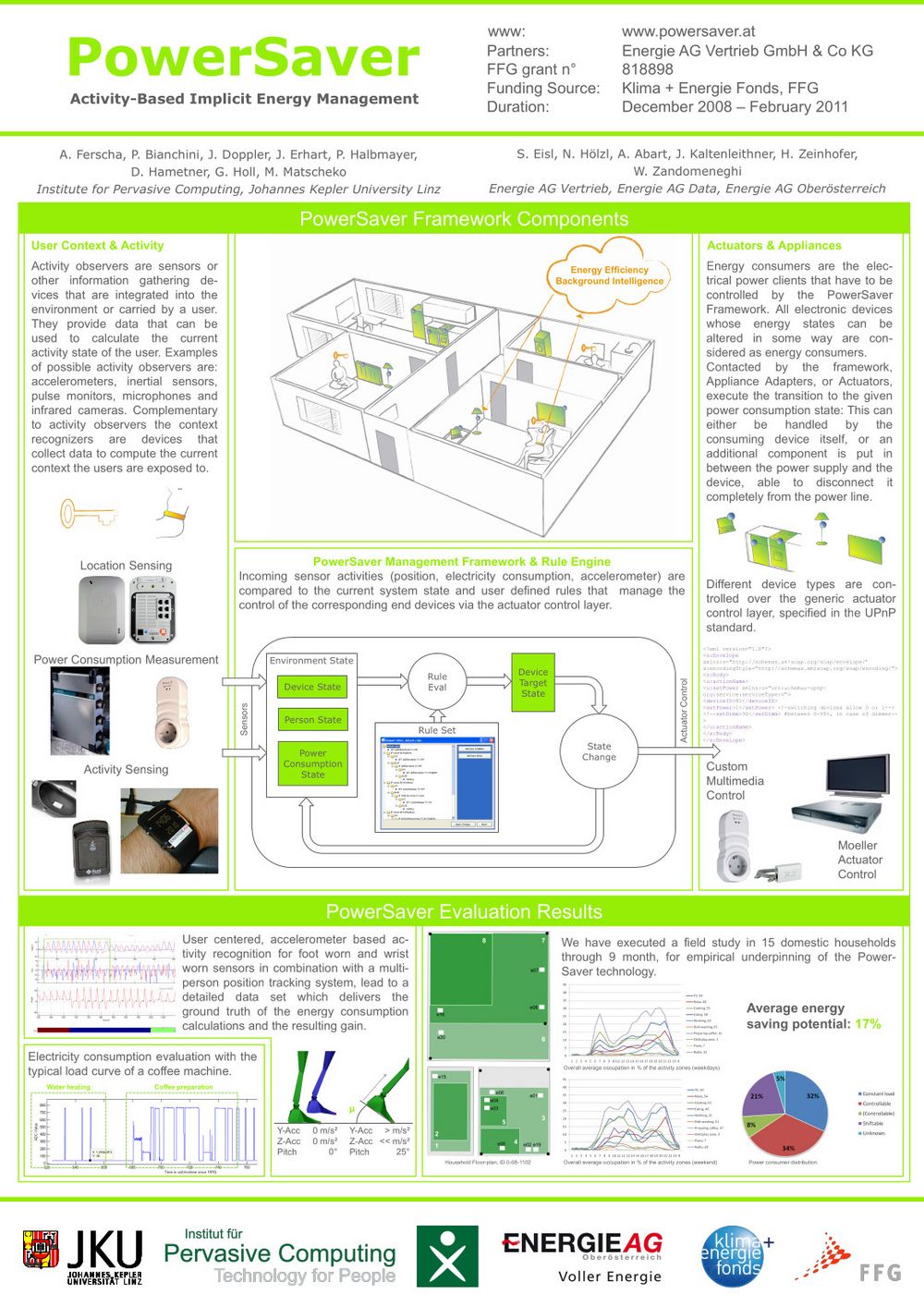| Funding | FFG Neue Energien 2020 (klima+energie fonds) | ||
| Project no. | 818898 | ||
| Duration | 2008-2011 | ||
| Consortium | Johannes Kepler Universität Linz*, Energie AG | ||
| Role | Proposer, Coordinator |

The EU Action Plan for Energy Efficiency COM(2006)545 unveils on an EU wide energy saving potential of more than 20% by 2020, achievable without loss of economic strength or quality of life - and calls for action plans to reduce energy inefficiency. The Austrian energy efficiency Action Plan (according to EU regulation 2006/32/EG) has developed energy saving benchmarks, and a "National Plan of Energy Efficiency Measures", among them being the "Development and Exploitation of Energy Efficient Appliances and Solutions" (Stand-by).
Today’s electronic equipment, machines and appliances, as a matter of convenience, provides features to be explicitly switched to reduced energy consumption modes ("stand-by" modes), when not in active use (but to be instantly ready for use upon explicit user invocation). Though bearing potentials as an energy saving solution, more and more empirical evidence is delivered by the analysis of behavioral patterns in user studies, reporting effects towards the exact opposite: With the ability to just put an appliance in stand-by mode when not in use, devices are no longer switched (totally) "off" – thus causing surprisingly high so called "stand-by losses". The "stand-by mode" of electronic devices and appliances is thus subject to a discussion of prohibition in some of the member states.
The PowerSaver research project proposes a power management solution based on sensors for activity and context recognition, in order to avoid standby losses of electronic equipment, machines and appliances. It builds on an automatic (or implicit) switching of stand-by modes of these devices, based on the recognized or anticipated situation (rather than forcing users to explicitly switch among those modes). Clearly, such a solution is highly reliant to a reliable and robust recognition of user activities (like walking, standing, sitting, lying; working, reading, cooking; editing or "in conversation", etc.), and user situations (or contexts) like "at his desk" or "in a meeting", etc. We have developed the architecture of such a solution, together with the methods and algorithms involved in context recognition and activity tracking.
As a cooperation among one of the largest power authorities and network operators in Austria, Energie AG, and the Institute of Pervasive Computing (JKU Linz), this project will develop an activity based implicit energy management solution, and install and validate it in a testbed of about 12.000 newly installed Energie AG smart meters. Activity and context recognition methods based on technical sensors (accelerometers, gyroscopes, acoustic sensors, etc.) in different embeddings (body worn, integrated in artefacts or into the environment) will be studied and empirically validated in two case studies ("office" and "home").